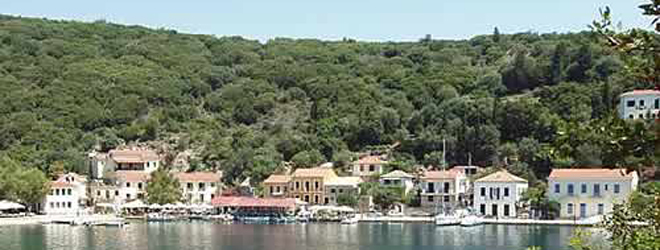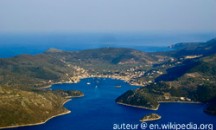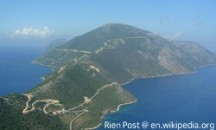
Ithaca
Ithaca
The Ionian islands lie to the west of mainland Greece, each with its own distinct character, and each bearing testimony to the various colonisations and historical influences of its numerous rulers. The island of Ithaca lies just northeast of the larger Kefalonia and consists of two peninsulas almost equal in size.
Settlements on Ithaca date back as far as 4000-3000 BC, and it is believed that by Mycenaean times it had developed into the capital of a kingdom that included Kefalonia.
Today the island of Ithaca has a population of around 4 000, and its capital Vathý, also known as Ithaca Town or Ithaki, has one of the world’s largest natural harbours. The island does not have its own airport, and most visitors reach it by ferry from Kefalonia.
A romantic history
The island of Ithaca (alternative spelling Ithaka) is famous as the mythical home of Odysseus, the wandering hero of Homer’s epic, the Odyssey. CP Cavafy (1863-1933), the most distinguished 20th century Greek poet, wrote of Ithaca:
As you set out for Ithaka
Hope your road is a long one,
Full of adventure, full of discovery.
Keep Ithaka always in your mind.
Arriving there is what you’re destined for.
Together the Odyssey and Cavafy create a romantic vision of a special place, and the beautiful, rugged island with its lush vegetation and stunning white, pebbly beaches does not disappoint. In spite of being the most legendary of all the Greek islands, Ithaca remains one of the islands that are least known and least spoilt by tourism.
The restored town of Vathý

The devastating earthquake of 1953 also affected Ithaca, largely destroying the capital. It was reconstructed in a manner matching the original style.
The Archaeological Museum contains a collection of vases and votives from the Mycenaean period, and the church of Taxiárchis houses an icon of Christ dating to the 17th century and believed to have been painted by El Greco, who was a disciple of Titian and whose art forms part of the Cretan School of Painting.
Geography

Ithaca is a wonderful island to explore – hilly, with a few pebble beaches and little development. Stavrós, with only 300 inhabitants, is the largest village on the northern side of the island.
Odysseus’ Palace is believed to have stood above Stavrós, on the hill on Pilikáta. A tour of the area, conducted in several languages, may be arranged at the Archaeological Museum of Stavrós.
The Arethousa spring is located south of Vathý, and is thought to be the spring described by Homer. The Cave of Nymphs referred to by Homer is believed to be the Marmarospili cavern southwest of Vathý, reputedly the place where Odysseus hid his treasures.
Accommodation
The 4-star Perantzada 1811 is a small, stylish hotel located on the waterfront in Vathý that offers great food and service and a pop-art interior. Mentor, also in Vathý, is a small, family-run hotel overlooking the harbour. In August Ithaca hosts an annual cultural festival featuring orchestras and artists from around the world.